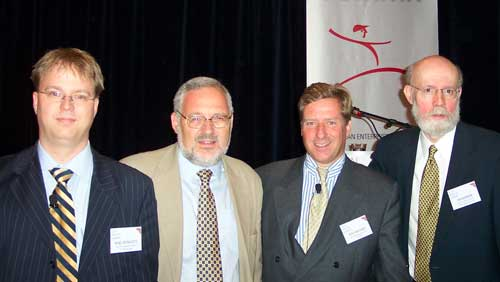
This was the first Lean Initiative from the Lean Enterprise Academy, together with the Lean Management Institutes in Germany and Holland, to spread lean beyond the shop floor. The objective was to bring together the leading experts and leading pioneers in applying Lean Thinking beyond the shop floor to office support processes, and beyond manufacturing to financial services, utilities, healthcare and public services. We hoped this would provide a unique opportunity to meet, share, learn and translate lean across sectors and to develop a new, common lean approach for others to follow.
Some 250 people braved the summer storm to attend the Summit, 80% from Europe and the rest from the USA, Canada, Brazil, South Africa, Australia, Japan, India and Saudi Arabia. One third came from manufacturing organisations, one third from services and the public sector and one third from education and consulting. Most of them had a considerable prior knowledge of lean. The full proceedings containing 27 plenary and workshop presentations were given to delegates at the end of the Summit on a 128 MB memory stick, copies of which can be obtained from LEA.
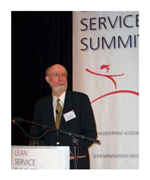
The first conclusion from the Summit is that lean works in all kinds of office and service processes. It may need translating into the language of your industry, and you may need to create an example in your industry to convince the sceptics. But wherever it has been tried the results are consistent – better customer satisfaction through higher customer fulfillment (right first time on time), lower failure demand and compressed and streamlined processes free up resources and cost as waste is eliminated and as capacity is aligned to demand. In other words you can create more value for customers at much lower cost with more motivated employees.
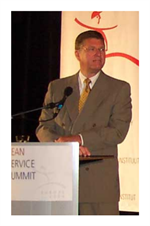
The second conclusion is that in service processes you need to spend more time up front analysing and really understanding the nature of your customer demand, learning to dig down to discover the customer’s underlying purpose and to distinguish between value and failure demand. You can then work on how you can better deliver and enhance value demand, maybe by separating it into separate value streams. You can also tackle the root causes of failure demand so you can eliminate it. Once you have done this then you are ready to redesign each value stream.
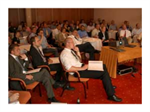
The third conclusion is that office processes are different in several respects, which need to be taken into account when redesigning the value stream: – customer demand is often not clear, process steps are not visible, no one sees the whole process, the work rarely goes as planned, right first time is very low, total elapsed time is very long, there are many hand offs, it is hard to see waste and it is hard to see progress and problems in current working.
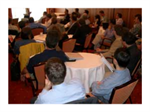
There are also fears and a lot of misunderstandings about standardising work and stifling creativity. Standardising the common process steps and the hand offs between them enables the routine process to run smoothly, freeing up more time for creativity in responding to individual customer needs or designing new ways to create value. This in turn leads to better employee satisfaction – obvious but counter-intuitive.
The fourth conclusion is that value stream mapping is the most powerful tool for redesigning office processes. Indeed the potential gains are even bigger in the office than on well studied processes on the shop floor. John Shook summarised the value of VSM as follows, emphasising that leadership is key and the objective is learning to deepen knowledge of the process:-
- It helps you visualise more than one process level
- It links the work flow with the “controlling information” flow
- It enables “System Kaizen”, a focus on lead time and total system optimisation
- It provides a new common visual language
- It provides a blueprint for change
- It ties together lean concepts and tools
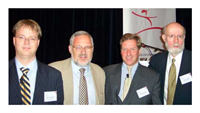
The final conclusion is that while lean certainly needs to be built bottom-up by those involved in the process, it also has to be led from the top to really make a difference to the performance of the organisation. It was impressive to hear how in different ways General Motors, General Electric, Deutsche Telecom and Deutsche Bahn are rolling lean out across the whole enterprise.
“Good overview and inspiration – face to face exchange with other lean practitioners”
“Lots of ideas to translate manufacturing experience into office processes …”
“A great opportunity for sharing of lean experience and learning new aspects”
“Valuable, thought provoking and stimulating! ..useful to see lean service experiences implemented”
“A very worthwhile summit, lets keep it moving!””
“Excellent event – looking forward to next year’s Summit!”
“Good to hear experts and real experiences … great for sharing ideas and good inspiration for getting started”
Redesigning a Maintenance System
Heiner Huesmann - Deutsche Bahn Netz AG, Germany
It Has to be Perfect: from Cars to Care
Dr. Roel Schuring - University of Twente, The Netherlands
Value Stream Management for Lean Healthcare
Dr. John Long - TWI Network, USA
Insuring Lean Operations - How JPF Learned to be Lean
Cynthia Swank - Jefferson Pilot Financial, USA
Systems Thinking for Service Organisations
John Seddon - Vanguard, UK
Optimising the Contractor Management
Manfred Redeker - Eisenbahn und Háfen GmbH, Germany
Examples of Lean Applications in Healthcare
Dr. Frank Dotman - OLVG Hospital, The Netherlands
Lean in Offices, Hospitals, Planes and Trains
Steve Corbett - McKinsey, Canada
Value Stream Mapping in the Office
Beau Keyte - TWI Network, USA
Creating the Lean Car Dealer
David Brunt - The Lean Enterprise Academy, UK
Maintenance and Service Processes
Peter Dummler - proLean Consulting AG, Germany
Herrestad Clinic, Sweden
Dr. John Long - TWI Network, USA
Maintenance Management at BAM Rail BV
Ad de Blaaij - BAM Rail BV, The Netherlands
Home Housing
Peter Stott - Home Housing Association, UK
Housing Repairs
Sue Cook - Home Housing Association, UK
Process Excellence
Steve Withers - Canada Post, Canada
An Action Plan for Lean Services
Jim Womack - Lean Enterprise Institue, USA